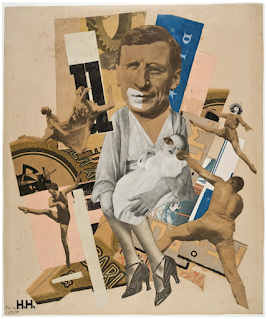Good Intentions
I like puzzles. I will stay up all night to piece together a board. You will know I'm getting serious about a puzzle when I start sorting. I have names for the different shapes found in standard puzzles: edge pieces, friends, dogs, flying squirrels, ferns, and four-legged tables. When I start sorting by color you know I'm finally picking up on subtleties of the design.
The puzzles I enjoy most feature great works of art. A puzzle lets me send time with the masters...Cézanne, Degas, Charley Harper...and dig into the design choices they've made.
.jpg) The painter I enjoy spending time with most is John Singer Sargent. His portraits strike me as candids, capturing quirky character traits of his subjects. His brushwork is distinctive.
The painter I enjoy spending time with most is John Singer Sargent. His portraits strike me as candids, capturing quirky character traits of his subjects. His brushwork is distinctive.
Now that I've been tasked with an assignment in appropriated art, it stands to reason that I would select a John Singer Sargent portrait to subvert. I'm drawn especially to The Daughters of Edward Darley Boit (1882). First, the painting is considered one of Sargent's masterworks. Second, it depicts four young sisters, each at a different stage of adolescence. I come from a large family, so Sargent's portrait of the four Bolt sisters strikes familial chords.
The painting draws added emotional weight from the apparent withdrawal of the two older sisters. The two older girls hang back in the shadows of a doorway while their younger sisters comfortably hang out in a well-lit passageway. Their postures nod to the painting that John Singer Sargent intentionally references here: Las Meninas (1656), or The Ladies-in-waiting by Diego Velázquez.
Compared to the subjects in Velázquez's masterwork, the youngsters in Sargent's painting are dressed simply...white aprons worn over long-sleeved, knee-length dresses. Curator Erica Hirshler wrote a whole book on this painting called Sargent’s Daughters: The Biography of a Painting. She suggests that the arrangement of the girls relates to the white aprons they are all wearing. "Sargent was playing a game, setting himself a puzzle to solve about how to paint white in different kinds of light.”
Given the similar clothing, the age range of the Bolt sisters is not immediately apparent but the picture contains additional clues. At first, the three oldest sisters appear to stand at similar height. On closer examination, however, we see one sister is leaning against a tall vase. Though slouched, she is clearly the tallest of the four...perhaps by a full head if she stands straight. Jeanie is the second oldest, age 12.
Not yet women but approaching that threshold, the oldest Bolt sisters embody the first blushes of womanhood. Jeanie looks like she'd prefer to skip being immortalized while in the throes of puberty; the oldest daughter Florie, 14, stands near at hand. Florie is not quite as tall as her younger sister Jeanie but she stands with a maturity that the other three girls lack.
%20crop.jpeg)




Comments
Post a Comment